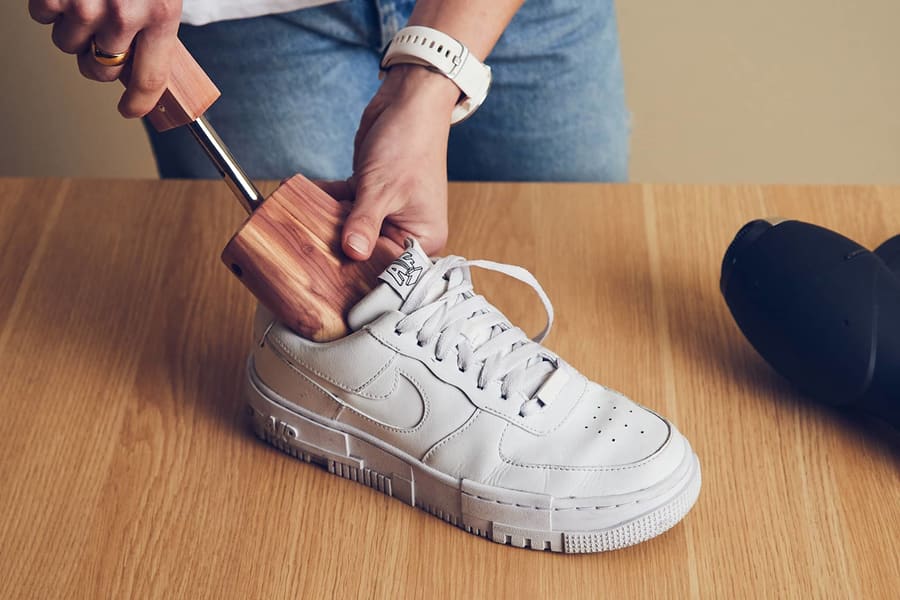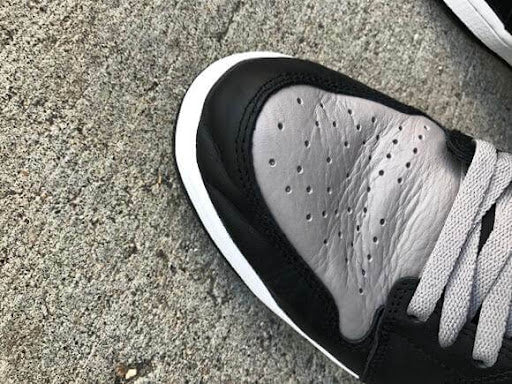In the world of footwear, creasing shoes is often seen as a rite of passage. Whether you’re a sneakerhead, a fashionista, or someone who enjoys a good pair of loafers, understanding how to properly crease shoes can enhance the experience of wearing them. The goal is to achieve that perfectly broken-in look without compromising the integrity of your favorite pair. In this article, we will explore the best techniques for creasing shoes, share real-world experiences, offer tips, and answer frequently asked questions to ensure you’re confident in your crease game.
Understanding Shoe Creases
What Are Shoe Creases?
Shoe creases are the folds or lines that form on the upper part of the shoe as they bend with the natural movement of your foot. This is particularly common in leather shoes, where the material conforms to the foot to provide comfort and support. A subtle crease can add character to your shoes, but an excessive crease might indicate wear and tear, which can decrease the overall aesthetics.
Why Do Shoes Crease?
Shoes crease for a variety of reasons. The primary cause is the natural flexing of the material as you walk. As you put weight on your shoes, the upper material bends, creating the creases. Other factors that can contribute to creasing include:
- Material Composition: Leather shoes typically crease more than synthetic materials due to their natural properties.
- Fit: Shoes that fit well may crease more naturally compared to tighter shoes, which might wear unevenly.
- Usage: Frequent use, especially in rigorous activities, can accelerate the creasing.
Real-World Experience: The Professional Take
As someone who has worked in the footwear industry for over a decade, I can tell you that the best way to embrace creases is through proper care and maintenance. I’ve seen countless pairs of shoes that were over-stressed, resulting in deep, unattractive creases. Conversely, well-cared-for shoes with strategic creases can look stylish and purposeful, reflecting a wearer who knows their footwear.
Techniques for Creasing Shoes
Preparing Your Shoes
Before you begin the creasing process, preparation is key. Here’s how to set yourself up for success:
Choose the Right Shoes
Selecting the right pair of shoes to crease is essential. Leather shoes, like Oxfords or dress boots, respond well to creasing because of their natural flexibility. Sneakers, particularly those made from canvas or leather, also conform nicely. Consider your shoe’s construction before attempting any irreversible changes.
Clean Your Shoes
Before creasing, make sure your shoes are clean. Use a soft cloth or a shoe brush to remove any dust, dirt, or debris. If your shoes are particularly dirty, you may opt for a mild soap solution. Cleaning your shoes not only preserves their appearance but also ensures that creases develop evenly.
Techniques for Creasing Shoes
Walking Method
The most natural way to crease your shoes is simply by wearing them. Here’s how to do it effectively:
- Wear Your Shoes: Start by wearing your shoes around the house. This will allow them to flex naturally as you walk.
- Choose the Right Socks: Thick socks can help create a snug fit and encourage the upper material to yield to your foot’s shape.
- Limit Your Steps: Don’t overdo it. Gradually increase your wear time to avoid unnecessary stress on the material.
Pros: Natural look; Best for long-term wear.
Cons: May take time; Risk of uneven creasing.

Steam Method
For those seeking a more immediate effect, the steam method can help soften the material and encourage desirable creases.
- Boil Water: Bring water to a boil, then let it cool for a minute.
- Use a Steamer or Iron: Hold the steamer or the steam from the kettle a few inches away from the shoe.
- Flex the Shoe: As you apply steam, gently flex the shoe with your hands to encourage creasing.
Pros: Quick results; Precise control.
Cons: Risk of damage if overheated; Requires caution.

Manual Method (With a Shoe Tree)
Using a shoe tree can also manipulate the creasing process. Here’s how to fine-tune your shoes’ appearance using this method:
- Insert the Shoe Tree: Place a shoe tree in your shoe to help maintain its shape.
- Flex the Material: With the tree inserted, gently flex the shoe to create desired creases.
- Leave It Overnight: Allow the shoe tree to remain in the shoe overnight for the best results.
Pros: Maintains shoe shape; Allows for precision in creasing.
Cons: Time-consuming; May not yield immediate results.

A Comparison of Creasing Methods
| Method | Speed | Effectiveness | Risk of Damage | Best For |
|---|---|---|---|---|
| Walking Method | Slow | Natural | Low | Everyday wear |
| Steam Method | Fast | Immediate | Moderate | Quick fixes |
| Manual Method | Moderate | Controlled | Low | Long-term maintenance |
Tips for Maintaining Creased Shoes
Protecting Your Creases
Once you’ve successfully creased your shoes, protecting those creases is vital. Here are some tips:
Regular Cleaning and Conditioning
Use leather conditioners regularly to keep the material supple and prevent cracking. Implement routine cleanings with a damp cloth to remove dirt and oil buildup.
Store Properly
Keep shoes in a cool, dry place away from direct sunlight. Use shoe trees to maintain shape and prevent deep creasing.
Rotate Your Footwear
Avoid wearing the same pair of shoes every day. Rotating your footwear can prolong the lifespan of each pair and reduce the rate of critical creasing.

Product Highlights for Creasing and Maintenance
Here are some recommended products that can aid in both creasing and maintaining your shoes.
- Shoe Trees: Brands such as Woodlore offer durable cedar shoe trees that absorb moisture and maintain the shape of your shoes.
- Leather Conditioners: Saphir and Meltonian both have excellent leather conditioners that keep your shoes looking brand new.
- Sneaker Shields: If you’re a sneaker enthusiast, consider investing in sneaker shields that prevent creasing while you wear them.
Pros and Cons of Creasing Shoes
The Ups and Downs of Wearing Creased Shoes
Just like anything in fashion, there are pros and cons to consider when it comes to creasing shoes.
Pros
- Style Appeal: A well-creased shoe can add character and sophistication.
- Comfort: Creased shoes often conform better to the shape of your foot.
- Natural Look: Creasing can make shoes appear more organic and less ‘brand new.’

Cons
- Permanence Damage: Over-creasing can lead to irreversible damage.
- Aesthetic Preferences: Not everyone appreciates the look of creased shoes.
- Uneven Creasing: Poor creasing techniques can result in an unattractive and uneven appearance.
Frequently Asked Questions (FAQs)
Common Queries About Creasing Shoes
FAQ 1: Can all types of shoes be creased?
Not all types of shoes are designed to crease. While leather and some canvas shoes can handle creasing, materials like plastic may not conform well.

FAQ 2: How long does it take for shoes to naturally crease?
It varies by the shoe and the wearer’s habits. Generally, frequent wear will gradually create creases within a few weeks.
FAQ 3: Will creasing shoes affect their lifespan?
Properly creased shoes can extend their lifespan, while excessive or harsh creasing methods can lead to premature wear.

FAQ 4: How do I remove creases from shoes?
To remove creases, you can use steam or a leather conditioner to help relax the material. A shoe tree can also assist in reshaping.
FAQ 5: Are there shoe types that crease more easily?
Yes, softer leathers and materials are more prone to creasing than stiffer varieties.
FAQ 6: Can I prevent creasing in sneakers?
Yes! Using sneaker shields and avoiding extended wear can help mitigate creases in sneakers.
FAQ 7: Does humidity affect how shoes crease?
Humidity can impact how materials wear and crease, particularly with leather. Keeping shoes dry is essential for maintaining their shape.
FAQ 8: Should I be worried if my shoes are creasing too much?
While some creasing is normal, excessive creasing might indicate that the shoe is not the right fit or that the material is wearing down.
FAQ 9: Can artificial creasing damage my shoes?
If done incorrectly, artificial creasing methods can result in lasting damage to the shoe’s upper and reduce its overall lifespan.
FAQ 10: Are there specific brands known for creasing more than others?
Certain luxury brands use higher-quality leather that bends beautifully, while budget brands might use synthetics that crease less attractively.
FAQ 11: Can I crease synthetic shoes like sneakers?
Yes, synthetic shoes can crease but often do so in a different pattern than natural materials.
Conclusion
Creasing shoes is not just about aesthetics; it’s a journey that resonates with every footwear enthusiast. Whether you prefer a natural approach by simply wearing them or want speedy results with the steam method, the key lies in understanding the materials and methods that work best for your shoes. The result can be a stylish, comfortably creased shoe that fits your lifestyle.
Incorporate these tips, tricks, and methods into your shoe care regime, and you’ll not only enhance the look of your footwear but also prolong their life. Remember, creases can tell a story—make sure it’s one of style, confidence, and enjoyment. Now step out and embrace those creases!